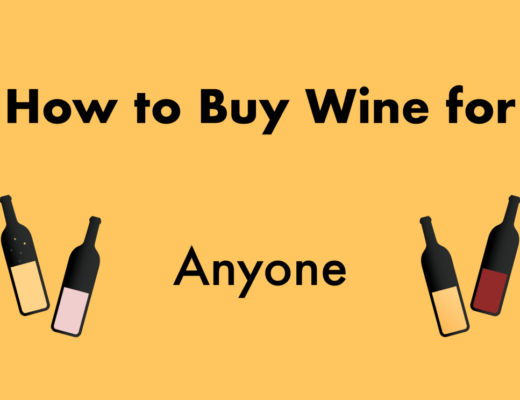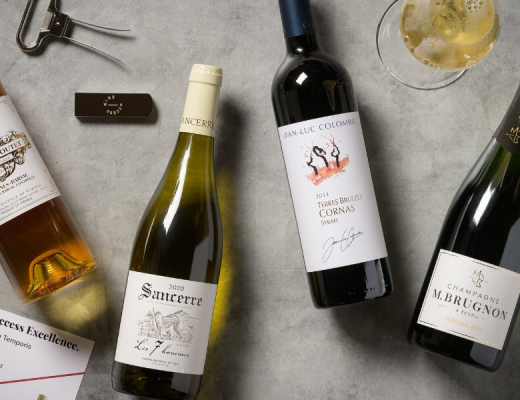Editor’s note: There are plenty of stories online about how to taste wine like a pro. So, instead of a step-by-step process, we asked Bay Area sommelier Courtney Humiston to give us her personal take on how anyone reading this — any person who has a glass of wine in hand — can do like the pros do and taste wine like an all-star.
story by Courtney Humiston
What am I Doing? I’m Tasting!
As a sommelier, when I’m tasting wine — that is, when my nose is buried deep in a glass of some red or white wine — guests will often ask me what it is I’m looking for. And it sounds a bit like they want to ask incredulously: ‘What the heck are you looking for?’ Like, ‘Will she catch the killer?’ as if I’m just some bloodhound on the chase.
At least, that’s the impression I get. Still, I carry on, face down, nose deep in the glass… swirl, sniff, sip… repeat. Part of my job, after all, is to describe a wine — how it smells, how its texture feels on the palate, and if the aromas translate to tastes, and how ultimately that wine will pair with food. I make selections for the wine list that will suit the restaurant’s mood and menu — and that will hopefully please my guests — based on what I’m tasting. And my title? Wine Director.
But what about you? If you’re not a Wine Director, or a Sommelier even, and you want to taste wine just like someone who has to for a living, can you?
Of course you can. Anyone can taste wine like a pro.
Taste Wine Like a Pro in 3 Steps
There are some very basic things we do as professionals that can hopefully make you better at finding a wine that you and your dinner companions will enjoy and will eventually enhance your own enjoyment of wine in general. And in spite of what certain movies, like SOMM (which I personally found boring!), would have you believe, evaluating wine is not a magic trick.
But even before we get started on the steps of tasting a wine like the way the pros do it, let’s ask ourselves what is the point? Excellent question. Tasting a wine for the first time is kind of like a blind date. We want to know what the wine is all about. Is it a classic expression of a variety or has the winemaker taken it to new heights, stylistically? We also want to know if the wine is aging well and if it will continue to develop complexities, or if it should be enjoyed in the present.
You might want to know if it’s worth bringing to your mother’s dinner party, a friend’s wedding, or if it’s suitable for a tailgate party — or do you just want to take it home and curl up with it on the sofa while watching American Horror Story? Or all of the above?
Whatever the case, grab a glass of something you love and let’s get to work. And don’t worry, you don’t have to spit (like we do in professional settings, or if you’re visiting three wineries in a day). The only requirement is you get into it! Let’s do this.
1. LOOK.

With time and practice, you will actually begin to make connections between how a wine looks and how it tastes. For instance, there are a few things that the color of a wine can tell you right off the bat. If it’s a white wine, does it look pretty? Is it clear and golden with hints of green? That’s a good indication that you’re looking at a young wine. Or is it brown and murky with flecks of sediment? That could be a telltale sign of aging. One trick to tell if a red, for example, is really heavy or on the lighter side, is to hold a glass over the page of a book and tilt the glass — if you can’t read the words, the red is likely going to be pretty heavy. Personally, I use a ‘see-through’ test for red wines because I don’t like heavy, dense red wines. But you might like that, and this is a good test — but there’s no hard and fast rule. So, next:
2. SMELL.

I like to close my eyes and take short, little sniffs. It certainly makes me look like I know what I’m doing (har har) but smaller sniffs — both before and after you swirl — will reveal a bevy of aromas, some pronounced and some more subtle, which is why small sniffs are critical to uncovering the subtlety. So, stick your nose in that glass and try to focus on one thing at a time: on the first sniff, you might try to imagine smelling certain fruits (citrus fruit, stone fruit, red fruit, black fruit, etc) and then on another sniff you might try to suss out other non-fruit qualities. I like to break this down into “above ground” (flowers, grass, sea air) and “below ground” (soil, asphalt, manure). Remember that if you’re not getting a lot of aromatics, it is more likely that the wine is not very aromatic than it is that you have a poor sense of smell. I’m no doctor, but it seems to me that most people have pretty much the same sensory capabilities; they just have to be trained (debate away).
3. TASTE.

Some sommeliers like to joke that we taste wine with our noses. It’s not a very good joke. The point they are making though is that most of the time, the flavor of the wine will match the aromatics. If you noted “fresh, ripe black cherry” on the nose, the wine will most likely have those flavors as well. The next most important components of a wine are texture and balance. Wine should not feel like water in your mouth and it shouldn’t be sticking to your teeth either. One winemaker I know likes to use shapes to describe how his wine feels, like “diamond” or “teardrop.” The point is to zero in on something tangible — is the textural feeling pointed and sharp, velvety and silky, grippy and rough, plush and opulent, viscous, furry, or something else entirely? The whole experience of a wine if it is in balance, is a lot like a roller coaster: a clean, fresh beginning then a rich, plump middle and a finish that cleanses your palate, feels fresh but also lingers pleasantly.
Once a sommelier (or a Wine Director, ahem) has gone through these three steps — Look-Smell-Taste — we’ll begin to imagine the ideal food pairing, or at least what foods would pair best. Personally, I like to ask myself: “Do I want to keep drinking it or not?” And the answer just might just tell you everything you need to know about the wine. But remember: taste is subjective and a wine that you might love, could be a wine someone else isn’t fond of, and the truth could be said in the reverse.
So, now that you can taste like a pro, what are you going to open?





